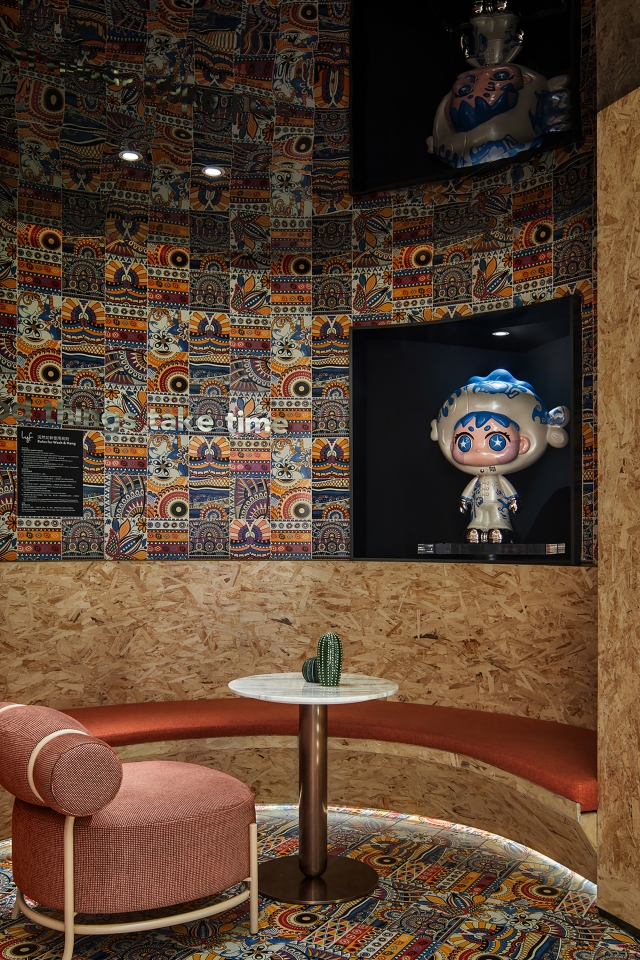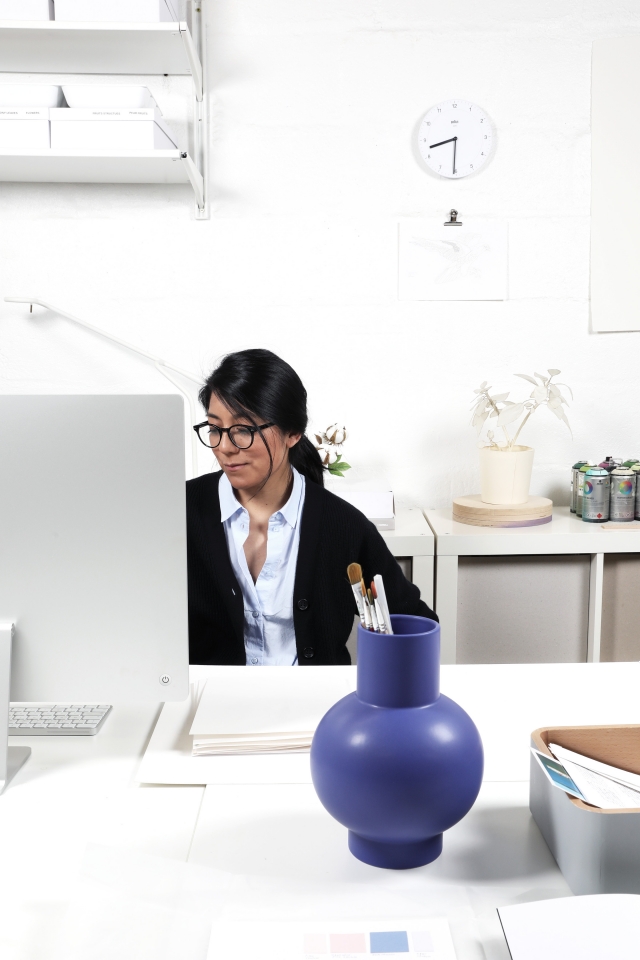Revisiting the earliest meetings of Andy Warhol and Joseph Beuys in 1979, this exhibition at Thaddaeus Ropac London brings together a selection of Warhol’s celebrated portraits of Beuys. While the Beuys portraits are held internationally in the collections of major institutions – including The Museum of Modern Art, New York, Philadelphia Museum of Art, PA, and Tate, London – this is the first time the group of works has been presented in a solo focus show since they were exhibited in the 1980s.
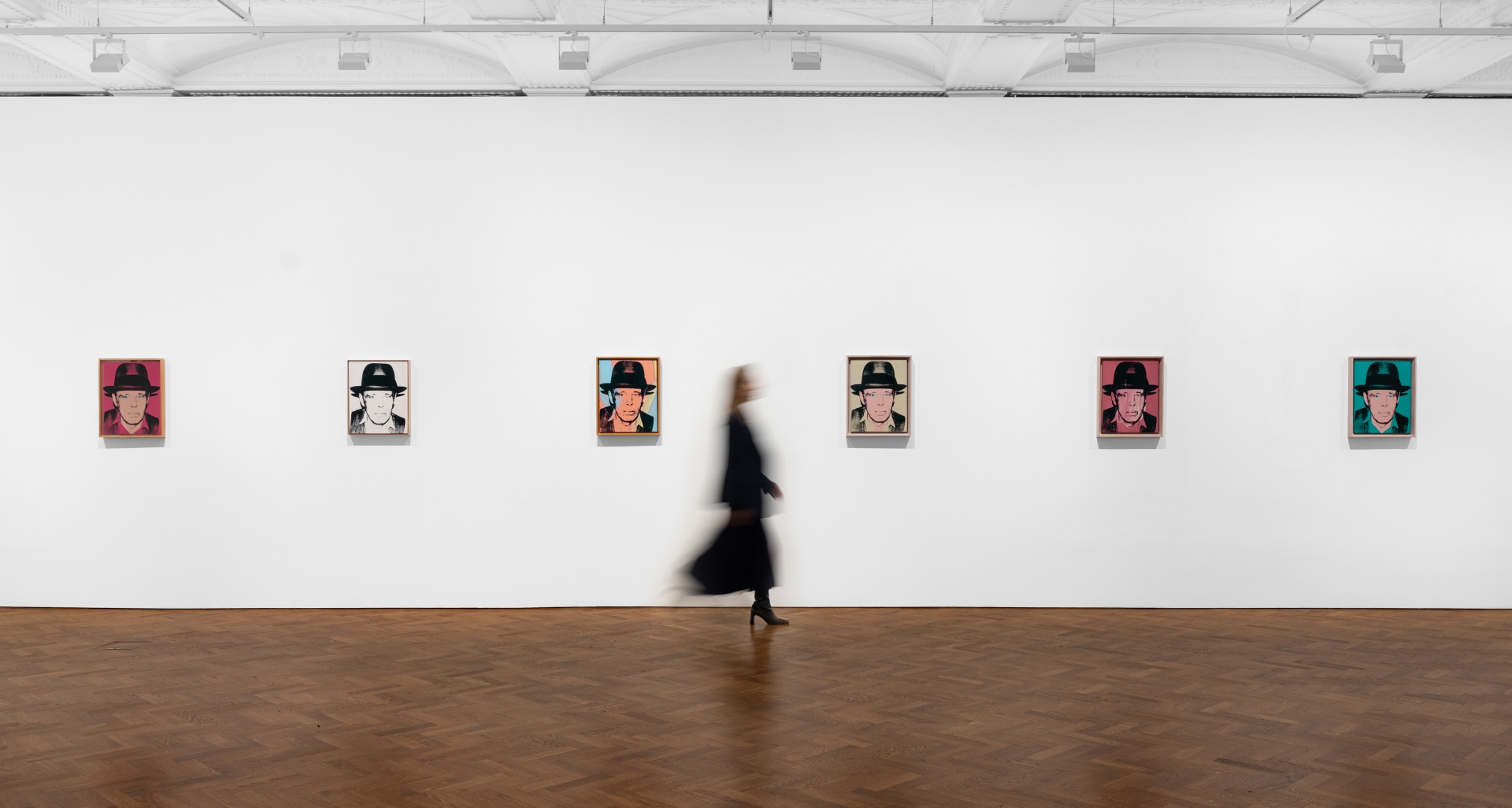
The two giants of art history first encountered one another in person at an exhibition opening at Hans Mayer in Düsseldorf, Germany. Described by the American writer David Galloway as having ‘all the ceremonial aura of two rival popes meeting in Avignon,’ the moment marked a key point of contact between the leading representatives of European and American art. The pair met on several further occasions that year, including on 30 October 1979 during the installation of Beuys’s landmark retrospective at the Solomon R. Guggenheim Museum in New York. The German artist was brought to Warhol’s studio to have his portrait taken, arriving at the same time that Georgia O’Keeffe was being photographed. Warhol used his Polaroid Big Shot to capture the now-iconic image of Beuys dressed in his signature felt hat and fishing vest, which went on to serve as the source image for the series of screen printed portraits made between 1980 and 1986.
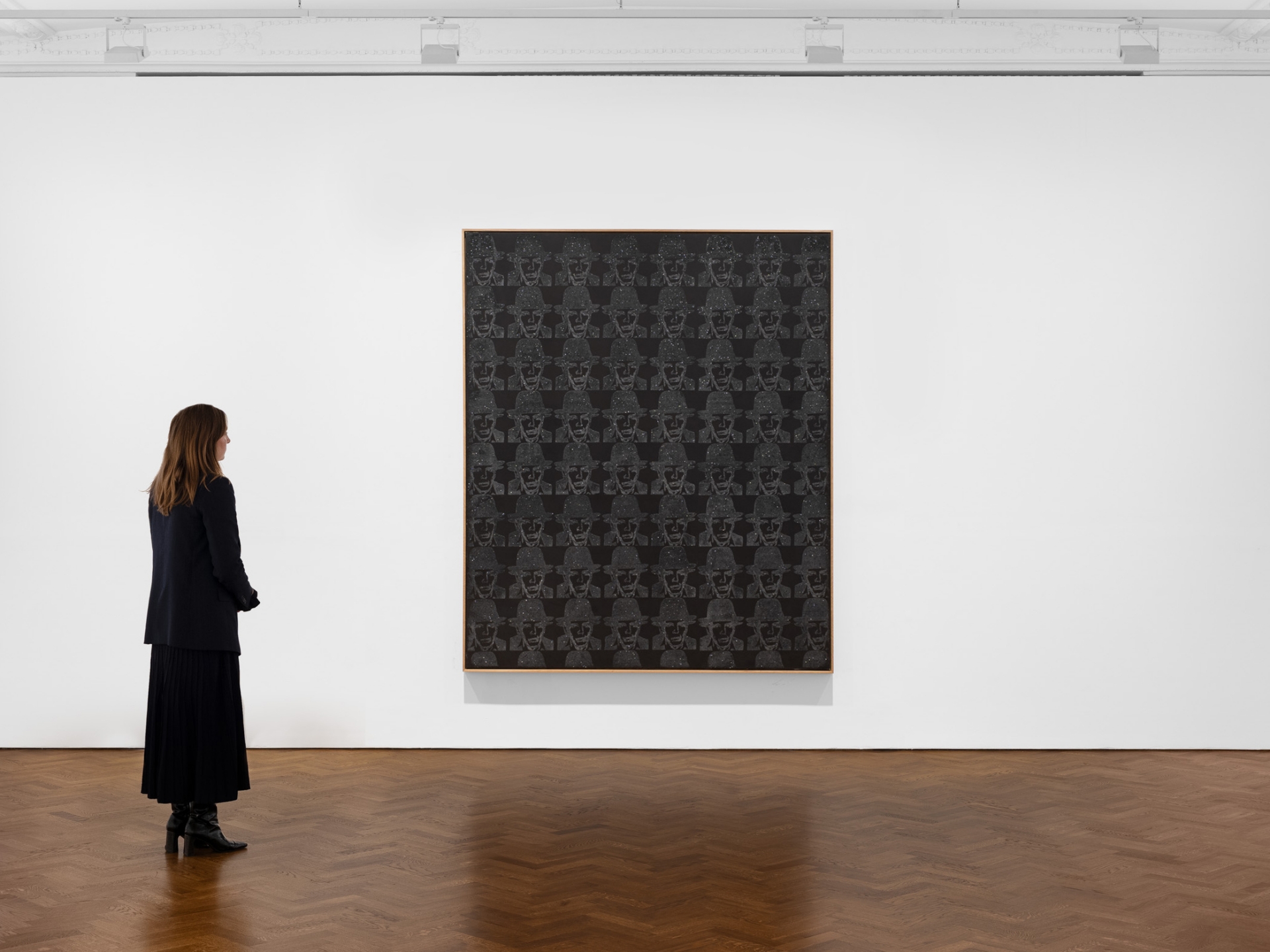
The earliest Beuys portraits were first exhibited at Galleria Lucio Amelio, Naples in April 1980. Gallerist Lucio Amelio, who worked closely with both artists, helped to establish their respective reputations in Italy and played a key role in bringing their practices into dialogue. He invited Warhol and Beuys to Naples for the exhibition opening where they participated in a bustling press conference, broadcast live on Italian television, demonstrating the international visibility of the artists across Europe in the 1980s. Additional selections of the Beuys portraits were exhibited at Galerie Klüser in Munich (in collaboration with the publisher Jörg Schellmann; 6 May – 9 July 1980) and the Centre d’Art Contemporain Genève, Geneva (7 – 30 July 1980).
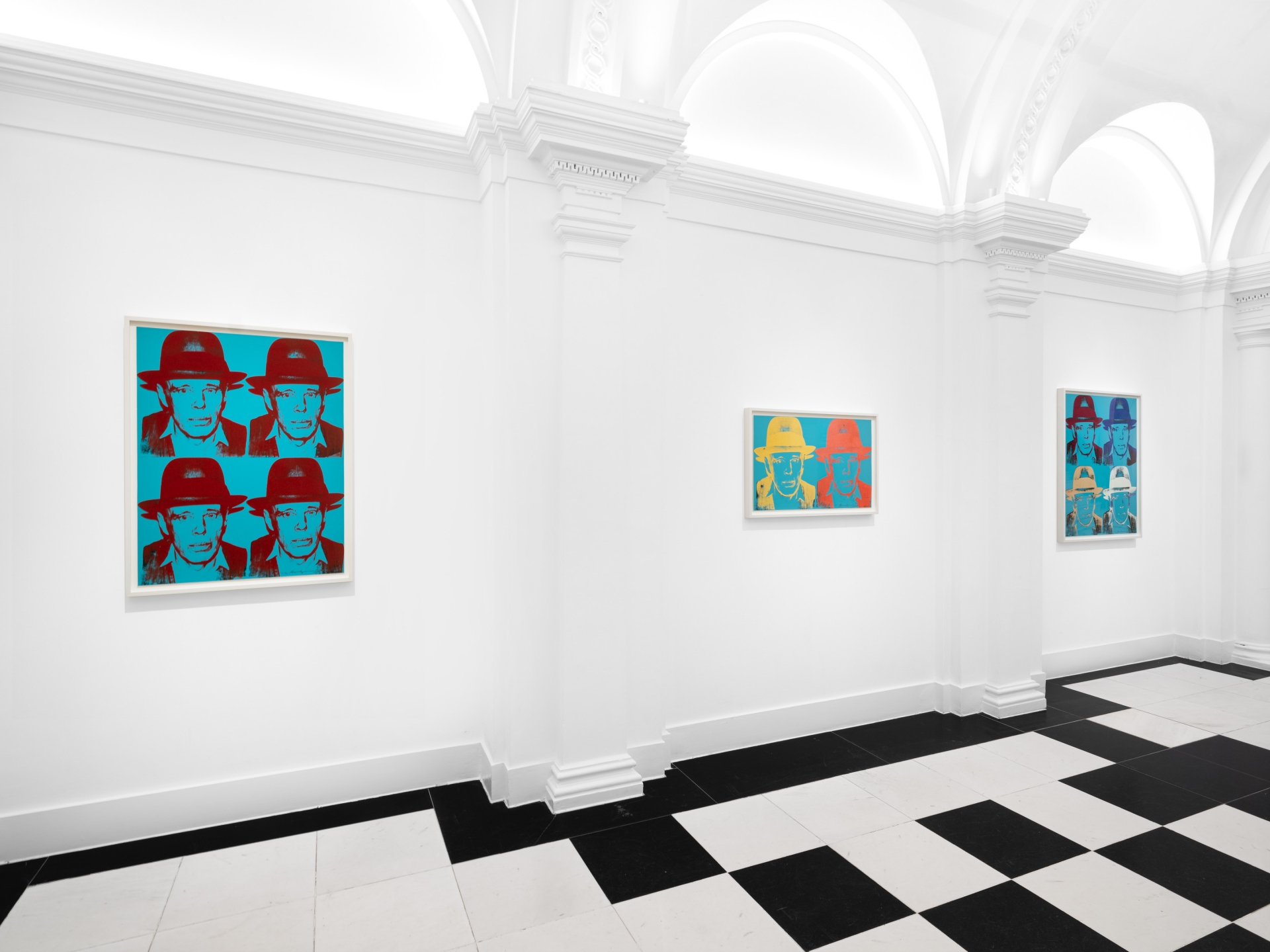
Repeating Beuys’s arresting gaze on different scales and in different formats, Warhol exercised his characteristically experimental approach to materials in the portraits. Amongst the paintings, unique Trial Proofs, line drawings, and unique and editioned works on paper, are examples of some of the artist’s earliest uses of diamond dust in portraits. These sit alongside images that have had their tonal values inverted to give the effect of photographic negatives. Belonging to the Reversal Series in which Warhol reproduced key subjects from across his wide-reaching body of work – including his iconic portraits of Marilyn Monroe, the Mona Lisa and Mao – in reverse, these reworkings of Beuys’s portrait demonstrate the particular value that he placed on his depiction of the other artist within his oeuvre.
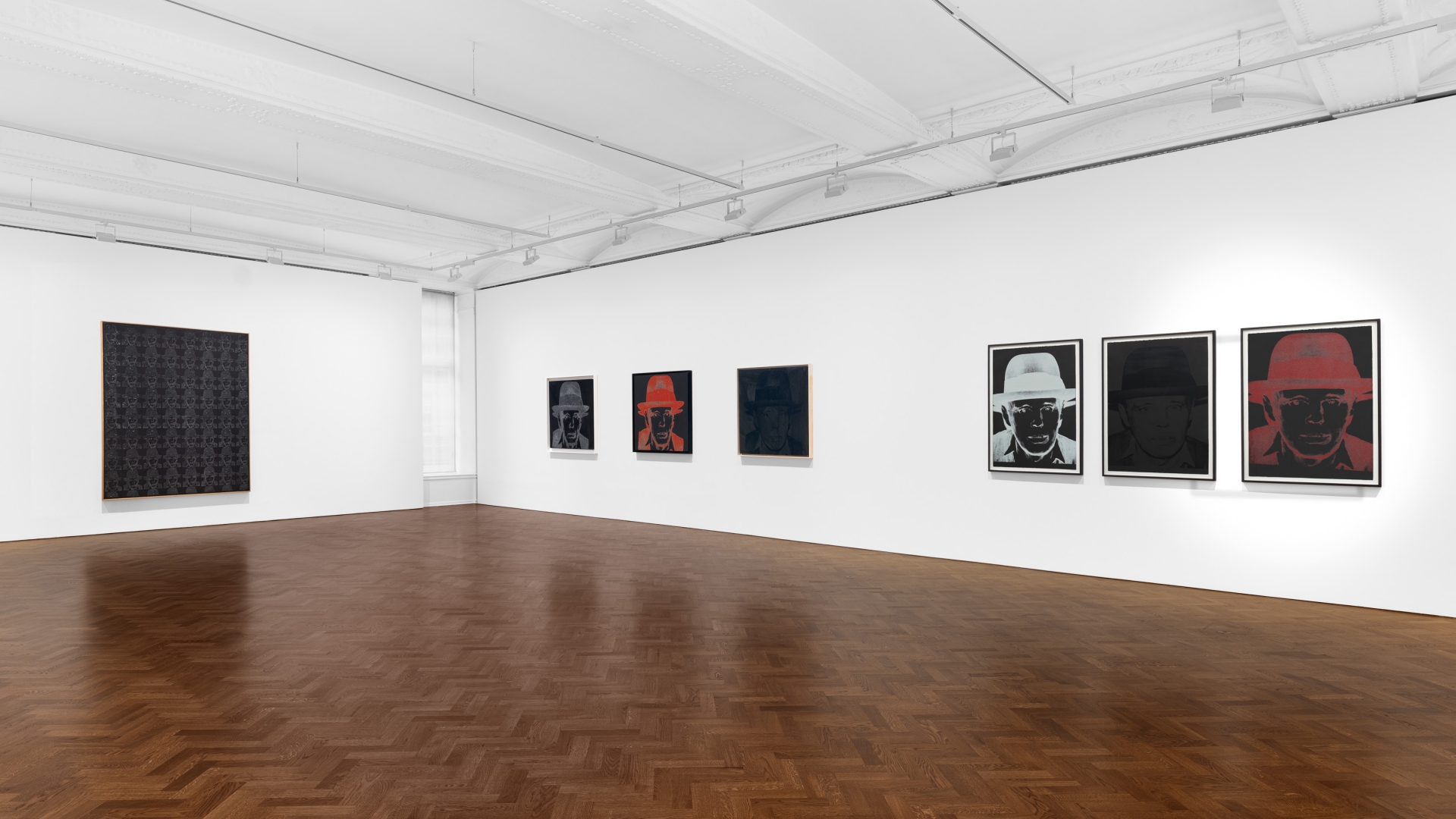
In his portraits, Warhol transformed his photographic source material through a process of reduction that resulted in emblematic, icon-like representations of his subjects, minimising the visibility of his own hand as he employed screen printing methods. ‘With silkscreening,’ he explained, ‘you pick a photograph, blow it up, transfer it in glue onto silk, and then roll ink across it so the ink goes through the silk but not the glue. That way you get the same image, slightly different each time.’ Warhol pursued variation in his approach to colour, composition and materials rather than in the image itself. He articulated Beuys’s head and shoulders against flat, monochromatic grounds as well as gestural sweeps of variegated colour using his silkscreen stencils. These modifications were tested out through Trial Proofs: unique prints created to experiment with different variations of an image. Warhol conceived of these works as a complementary group to his editions and paintings and, as the publisher Jörg Schellmann, who worked closely with Warhol in the 1980s, explains, ‘these Trial Proofs can be seen as essentially the same as Warhol’s originals,’ evidencing the artist’s innovative understanding of the nature of artmaking as he dismantled distinctions between editioned and original work.
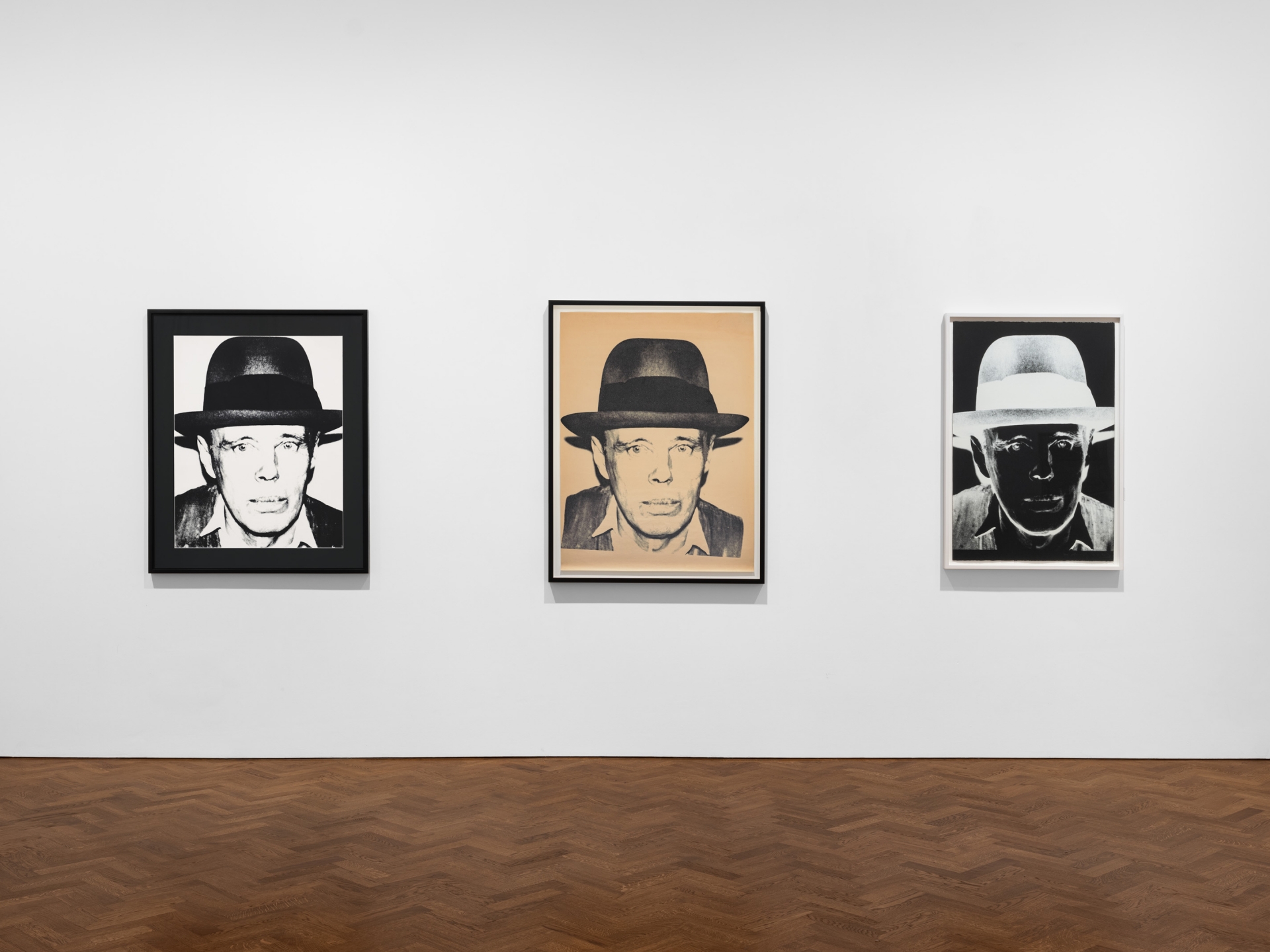
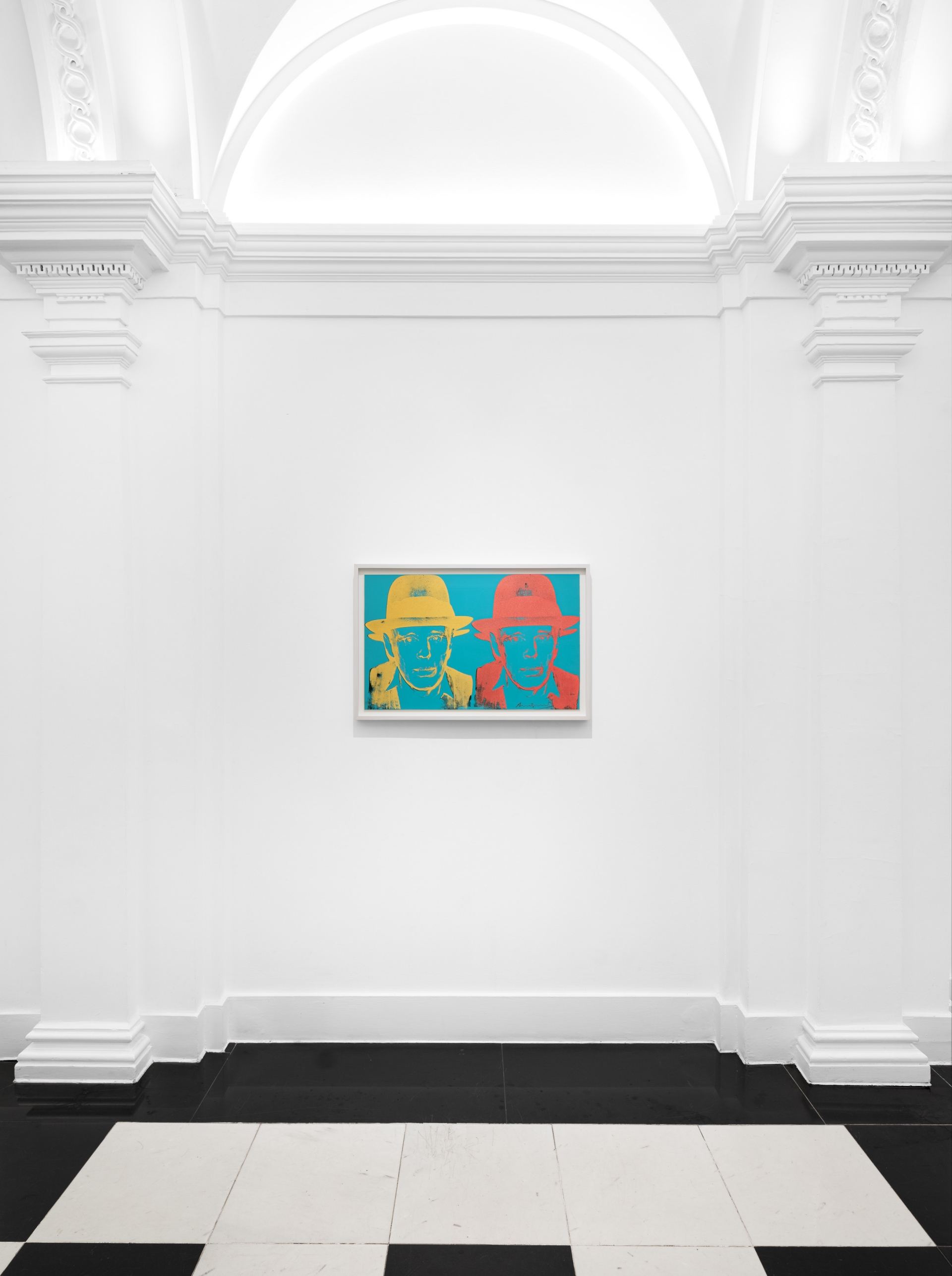
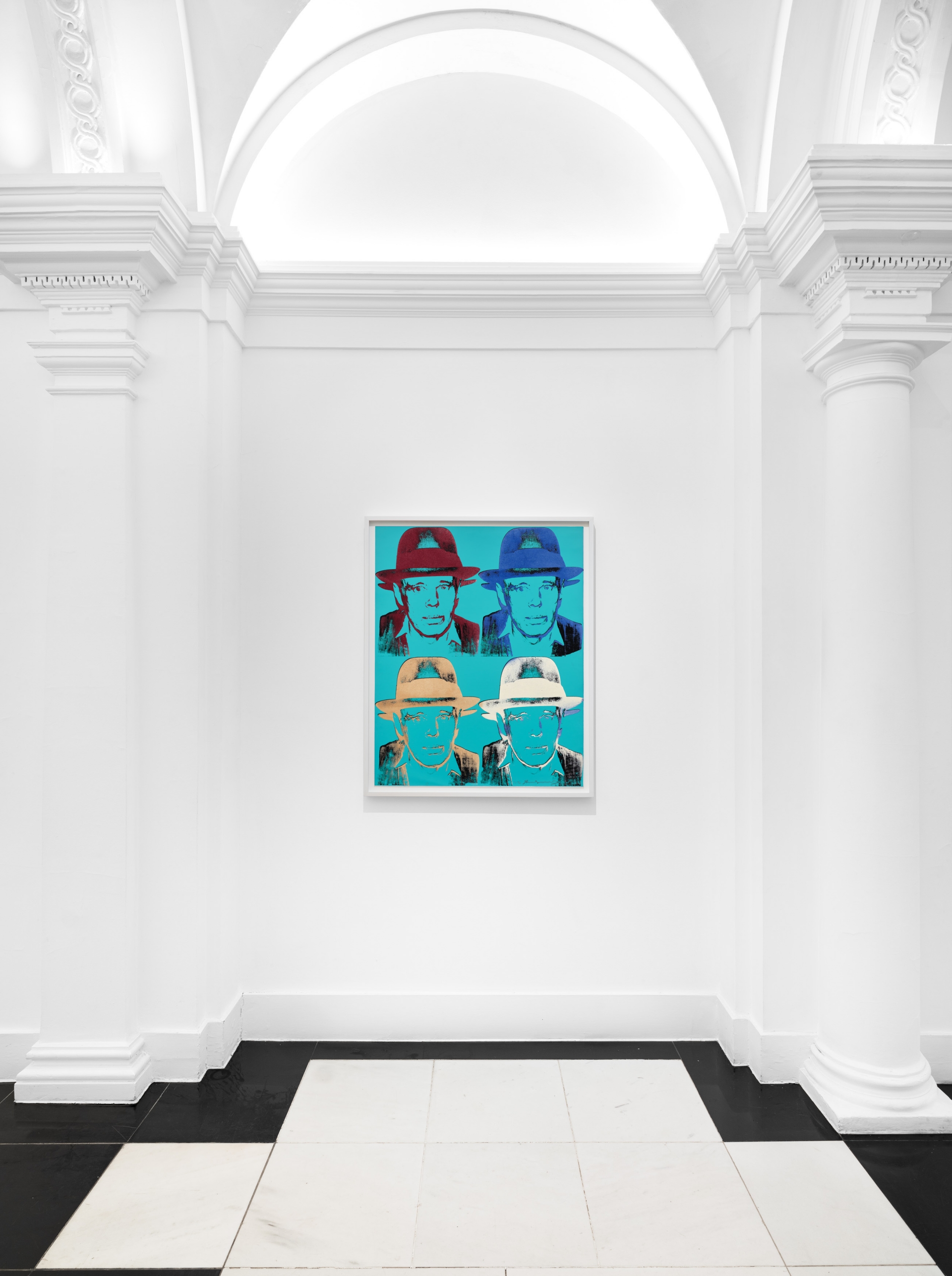
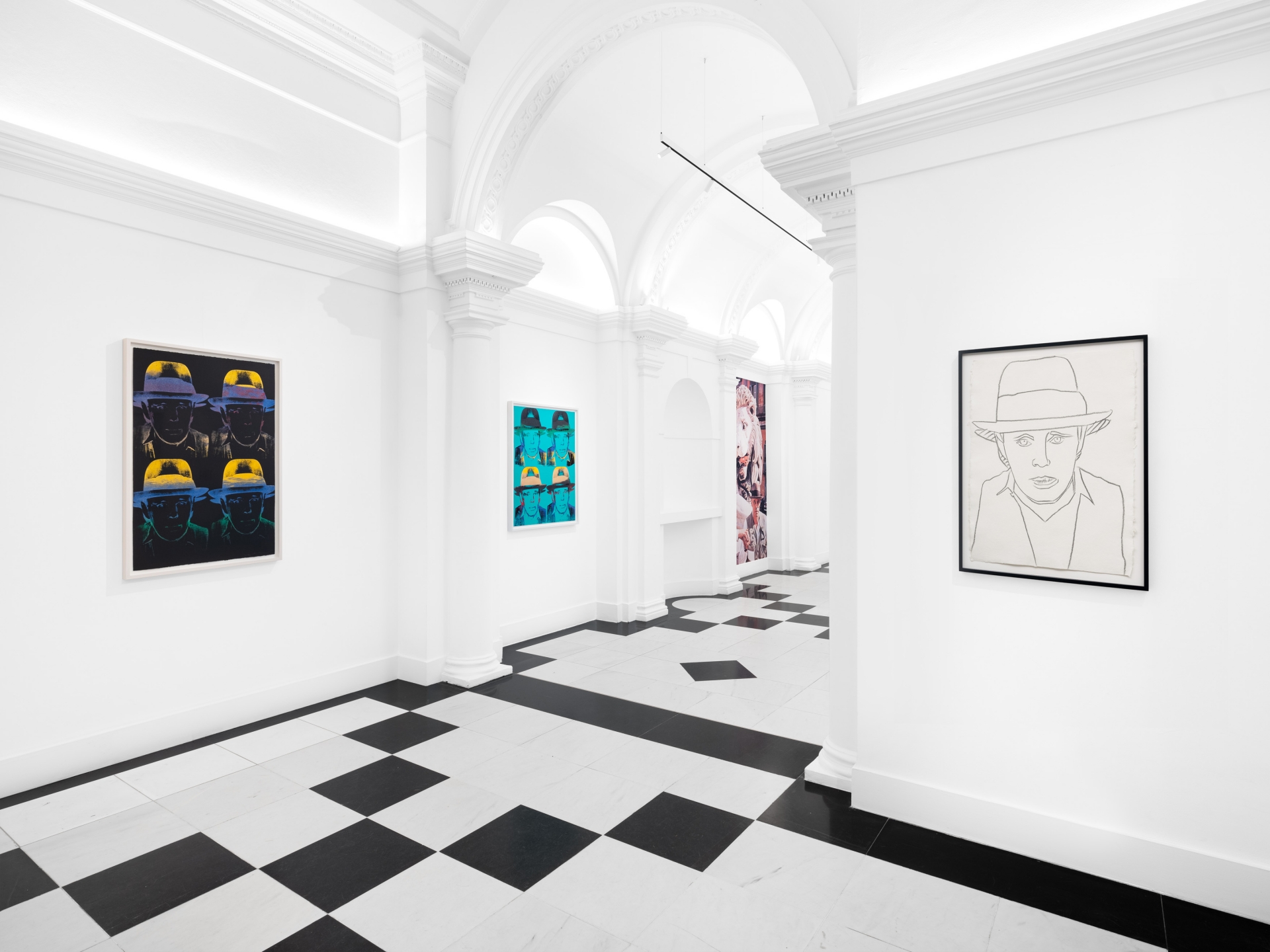
‘He himself is a sort of ghost, he has spirituality,’ said Beuys of Warhol. ‘Maybe this tabula rasa that Andy Warhol does [in his portraits], this emptiness and cleansing of any traditional signature [...] is something that creates the possibility of allowing radically different perspectives to enter.’ Despite the radical differences in their aesthetics and philosophical approaches to art, Warhol and Beuys shared an alchemical ability to render everyday objects and images unfamiliar through their practices, as well as an obsession with self-stylisation: Beuys was the shamanic artist whose mythical origins lay in his rescue from a plane crash by nomadic Tatars, while Warhol cultivated his public image as the ‘Pope of Pop’, instantly recognisable in his silver-blonde wig. Uniting his interest in seriality with his fascination with celebrity and self-image, Warhol captured the other’s self-stylisation through his own distinctive lens as he created a charismatic record of the most prominent artistic, cultural and political icons of the twentieth century, guided by his artistic investigations into repetition, medium and technique.
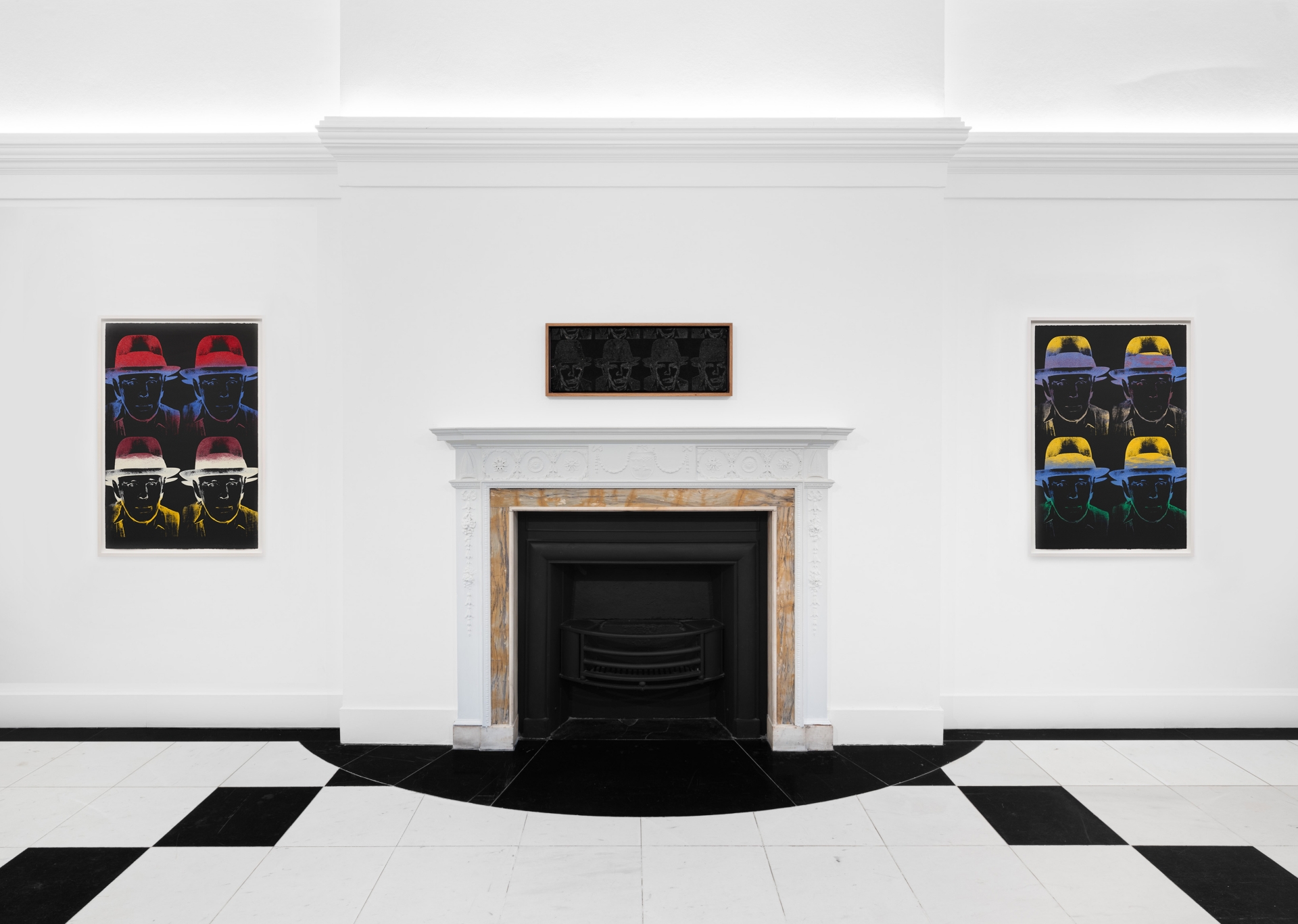
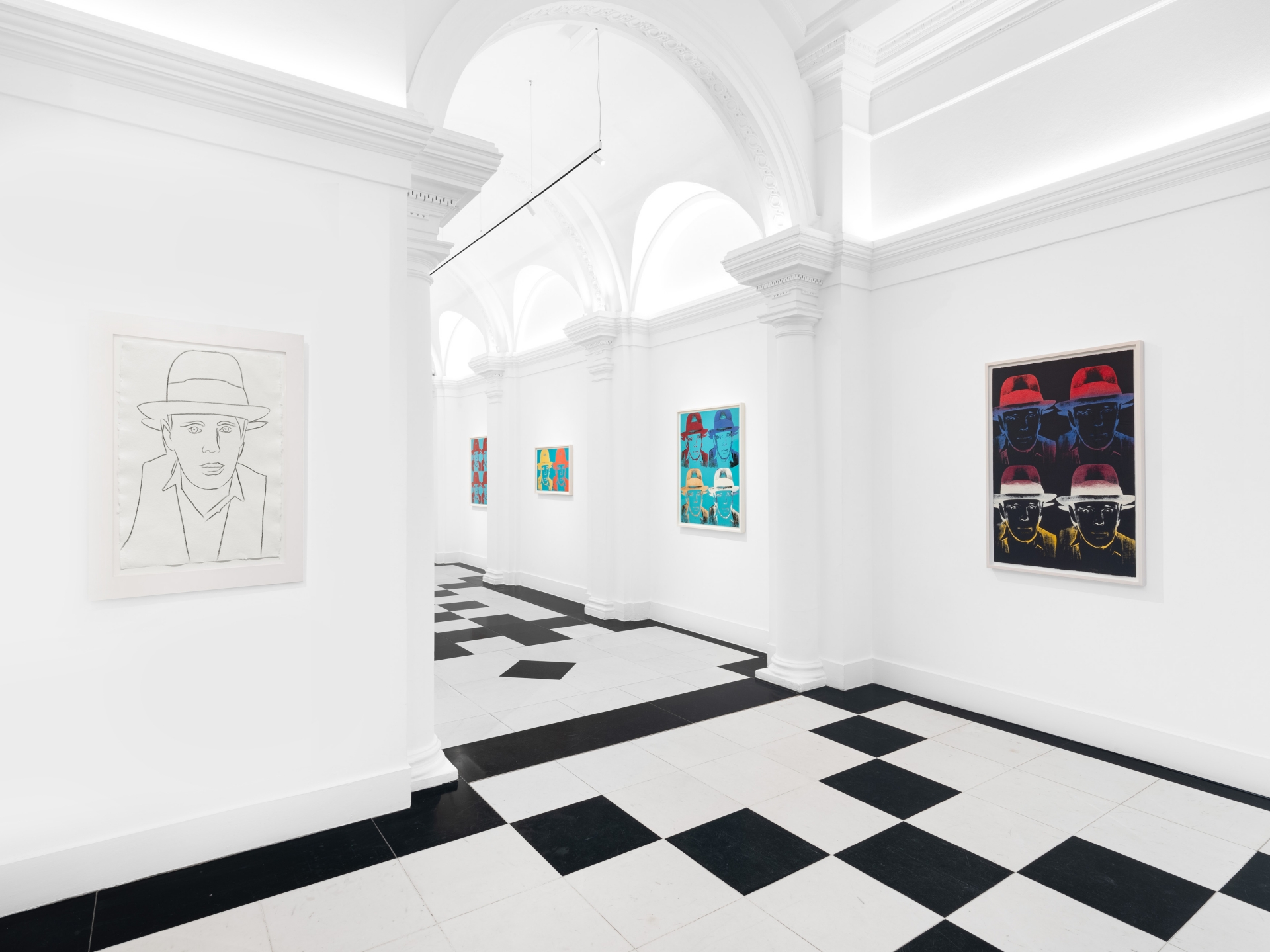
Andy Warhol: The Joseph Beuys Portraits is on view concurrently with Drawn into the Present: Portraits on Paper.





